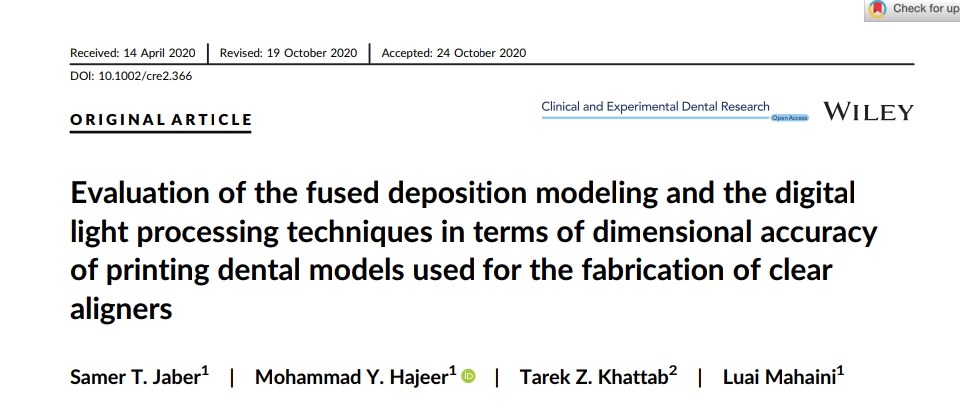|
Objective: The objective of this study was to assess the accuracy of physical reproductions of plaster orthodontic study casts fabricated by two different rapid prototyping techniques: Fused Deposition Modeling (FDM) and Digital Light Processing (DLP). Materials and methods: Twenty pairs of pretreatment plaster models were prepared from randomly selected patients at the Orthodontic Department, University of Damascus Dental School. Twenty-one reference points were placed on plaster models, followed by scanning and printing of these models using FDM and DLP techniques. Forty measurements were made on these models using a digital caliper. Paired t tests were used to detect significant differences in the measurements between the 3D printed replicas and the original plaster models (Gold Standard). Alpha level was adjusted due to the multiplicity of the tests. Results: The intraclass correlation coefficients for all the comparisons made between the 3D replicas and the gold standard models were greater than 0.80 with ICCs ranging from 0.802 to 0.990 and from 0.853 to 0.990 for the FDM and DLP techniques, respectively. This indicated an excellent agreement. No statistically significant differences could be detected between the 3D-printed models and their corresponding plaster models. The overall mean difference was −0.11 mm and 0.00 ranging from −0.49 to 0.17 mm and from −0.42 to 0.50 mm, for the FDM and DLP techniques, respectively. Conclusion: The accuracy of the 3D models produced by the DLP and FDM techniques was acceptable. However, for the fabrication of clear aligners, the optimum fit of the produced plates in the patients' mouths is not completely guaranteed
|
Abstract |







